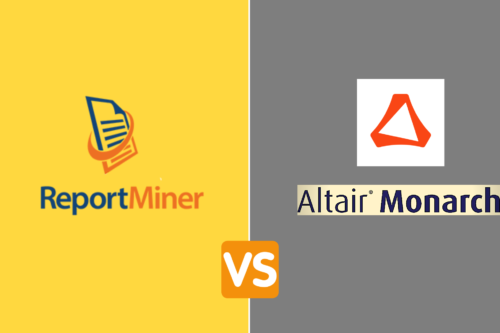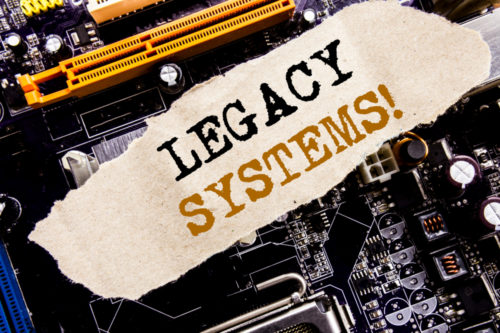Today, data has become a critical asset for effective business decision-making. With the exponential rise in information, managing vast amounts of data has become strenuous. Under-staffing, lack of technical expertise, shortsightedness, and a lack of budget are some of the reasons.
A 2018 report by Seagate has estimated that global data volumes would increase from 33 zettabytes to 175 zettabytes by 2025. Ironically, we are still unable to explore a large portion of this global data, especially in the hospital and pharma industry.
The World Economic Forum (WEF) states that 97% of the data produced by hospitals sits idle. This data has the potential to modernize the healthcare industry. The reason behind such a lag is because managing large, heterogeneous data sets from a myriad of sources has always been a challenge for hospitals.
However, things are not as grim as they sound. Technical advancements in Data Integration tools are now helping unify these scattered data points. According to Gartner’s Magic Quadrant report, these data integration advancements and the combined business strategies are what make constant growth of data manageable.
Like many industries in both, the public and the private sectors, data integration is playing a significant role in the medical industry. Healthcare is using this approach to improve established healthcare models. The same approach is also enhancing the value-chain across all facets, from invention through manufacturing to commercialization, leveraging data integration strategies in pharma at all levels.
Let’s see how effective use of data made possible with data integration and ETL technologies is revolutionizing the healthcare sectors and the pharma industries around the globe.
Data Integration Helps Manage Risks
Proper healthcare risk management begins with the patient’s safety. Few other industries are tasked with safeguarding their customers’ lives . In such a critical sector, even minor mistakes can hold dire consequences for patients, families, and organizations.
- Without proper healthcare data integration mechanisms in place, the industry is prone to expensive, recurrent errors which can significantly worsen outcomes for these stakeholders.
- According to an article in the Washington Post, 20% of the patients with serious health conditions are first misdiagnosed.
- One of the areas that healthcare needs to focus on is in determining how much staff is required at a given time in a particular hospital. This is because, with an overstaffed healthcare sector, the risks of unnecessary labor costs increase.
- Similarly, being understaffed in such a critical industry can affect quality of care for patients which may lead to fatalities. Data-driven insights help solve this problem.
- According to a Forbes article, a few Paris-based hospitals are integrating data from a disparate set of sources to predict the number of patients at each hospital on an hourly or daily basis.
Healthcare companies can create a composite data integration strategy for their business units to enhance the way they perform Business Intelligence (BI) activities. This would ensure more strategic decisions in future. Further, it can enhance the accuracy and efficiency of data and bring significant cost-savings to the healthcare sector. The FDA is considering evaluating health records through the Sentinel Initiative, which can gather data from diverse sources. Through this initiative, FDA has acquired data relating to more than 120 million patients in the US.
Healthcare Data Integration Increases Profits
Healthcare reimbursements were one of the main reasons the healthcare industry became serious about using data integration approaches to find loopholes in their financial buckets. McKinsey reported in 2013 that after a few years of continuous increase in healthcare expenses, repayments represented nearly 17% of the total US GDP. These costs were high and called for investments in data-driven solutions like data integration.
Therefore, hospitals started the following practices:
- Applying big data analysis to filter through complicated variables like lab tests and diagnosis coming from an array of data sources.
- In certain cases, integrating data from disparate sources enables proactive patient interventions to head off an expensive health issue.
- They leverage healthcare data integration to analyze, detect and prevent medical frauds early, therefore, saving millions annually.
- Data integration in pharma helps reduce the considerable costs of screening compounds in drug discovery research, thereby increasing ROI in these sectors.
Data Integration in Pharma Improves Interoperability, Compliance
Data interoperability is a multi-faceted concept that encompasses the consistent movement of information, data security, confidentiality of patient records from external systems/units to internal systems while maintaining data integrity.
ETL software such as Centerprise Data Integration software can seamlessly exchange data from multiple sources and structure it in a format that internal systems can use.
It helps improve data governance standards, maintains data quality and ensures data security. Moreover, it addresses compliance and other data management challenges well.
Healthcare Data Integration Improvements Lead to Innovation
Electronic Health Record (EHR) integration is crucial in establishing an integrated healthcare management system that helps the industry to acquire patient’s digital records along with structured healthcare data easily.
Numerous new technology initiatives like the Certified EHR Technology (CEHRT) and SMART APP have been launched to further aid in efficient EHR integration.
CEHRT is effective from 2019 and ensures that EHR systems are equipped with the technical capabilities and related securities to help them abide by data integration standards. This certification helps build trust between the healthcare providers and the patients, guaranteeing that the applications under use are secure and can maintain patient confidentiality.
The SMART APP, on the other hand, provides a framework that connects third-party applications to EHR.
Even with these advancements, healthcare and pharma data integration challenges still exist- especially in unifying data from legacy systems.
Data Integration Helps Evolve Healthcare Business Models
Through Data Integration, healthcare is evolving into a patient-centric model by unifying data from disparate sources. This aids in assessing patient outcomes and measuring improvement in performances as well.
- Accessing data from a centralized location can help machine learning and artificial intelligence algorithms run more efficiently, thereby aiding in autonomous analytics and decision-making.
- With data-driven healthcare and pharma research underway, the discovery of new treatments and medicines is becoming faster, resulting in the rapid development of cures. Since, the variations in the human genome require in-depth observations, having a well-integrated data solution is necessary.
- Technologies like the next-generation sequencing which can process lots of data quickly, will be able to generate the entire human genome in approximately $100.
Leading to an Integrated Data Solution
Unifying data from an array of disparate sources helps enhance a hospital’s view of patient information. With relevant data to feed analysis, operators can build efficient interfaces between multiple systems from a variety of vendors.
With integrated, normalized data sets, medical systems can map local data to standards such as Health Insurance Portability and Accountability Act (HIPAA) automatically by using healthcare industry codes. Therefore, a well-established data integration tool should be able to combine data from disparate sources and make information compliant with the standards of codification. Moreover, a user-friendly and meaningful way of data representation is required as well. A medical dashboard can be a good example of such a front-end interface.
Data’s impact on the healthcare and pharma industries is undeniable which means, it can no longer rest in silos. With modern IT solutions on the rise, efficient data integration is becoming ever more critical to effectively reap the benefits of information for this industry.
Even though data integration is already revolutionizing the health industry, several organizations are still not sure how to adopt this technology. Integration needs to be supported by both, analysis and interpretation to obtain purposeful insights.
Need help in adopting a seamless integration strategy? Our experts at Centerprise Data Integration software can help you out!







